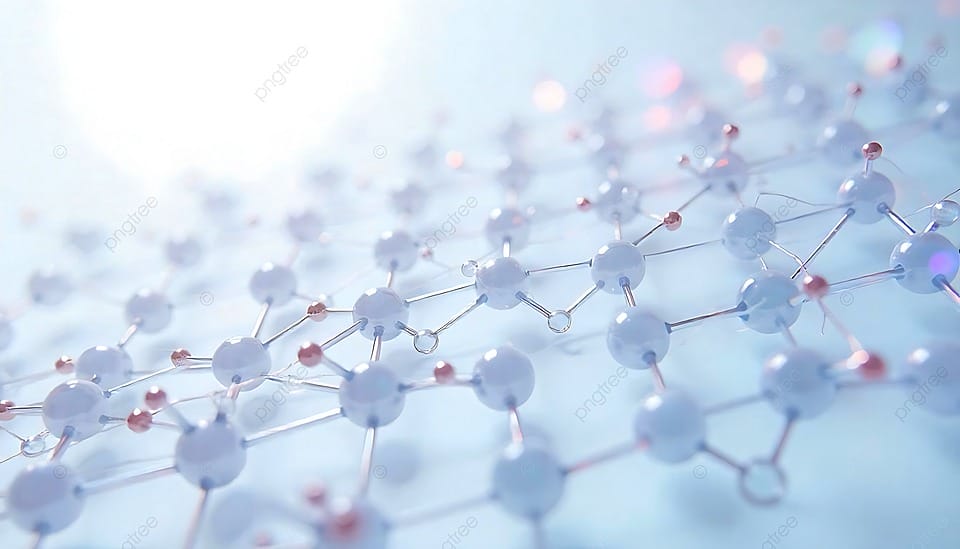Ever wondered about the tiny, intricate structures that make up our world? From your screen to life-saving medications, crystals play a crucial role in medicine, technology, and beyond. Crystals are solids with atoms arranged in highly ordered, repeating patterns. But did you know their properties are influenced by molecular symmetry?
Molecular symmetry is more than just a scientific term; it’s the key factor affecting everything from crystal formation to their physical properties. In this blog post, we’ll delve into molecular symmetry and its impact on crystals. Whether you’re a material scientist, chemistry enthusiast, or crystallography student, you’ll find valuable insights here.
Learn about different types of molecular symmetry, its effect on crystal packing and electrical properties, and real-world applications that make this topic fascinating and relevant. Let’s dive in!
Molecular Symmetry Explained
Molecular symmetry refers to the balanced arrangement of atoms within a molecule. When a molecule is symmetrical, specific parts mirror each other consistently. Think of a snowflake; no matter how you rotate it, the pattern remains the same.
That’s symmetry at work. Symmetry is not only visually appealing but also crucial in determining the physical and chemical properties of molecules, influencing their behavior and interactions.

Symmetry can be categorized into several types, including rotational symmetry, mirror plane symmetry, and inversion symmetry. Rotational symmetry occurs when a molecule can be rotated around an axis of symmetry and look the same at certain angles, like a spinning top. This type of symmetry is common in many simple molecules and contributes to their stability.
Mirror plane symmetry happens when one half of a molecule is a mirror image of the other half, like your left hand mirrors your right hand. This symmetry is essential in stereochemistry, affecting how molecules interact with light and other molecules. Inversion symmetry involves flipping all parts of a molecule through a center of symmetry, like a perfectly balanced scale.
This type of symmetry can influence the molecule’s energy levels and reactivity. Additionally, molecular symmetry is often categorized into space groups and crystal classes, which help in classifying and understanding complex molecular structures.
Understanding molecular symmetry is fundamental in fields such as chemistry, physics, and material science. It helps scientists predict the properties of new compounds, design drugs, and develop new materials with specific characteristics. In essence, symmetry provides a framework for comprehending the complex world of molecular structures and their interactions.
Types of Molecular Symmetry
Understanding molecular symmetry is essential for appreciating how molecules are structured and how they function. Each type of symmetry offers unique insights into the molecular world, affecting shape, stability, chemical reactivity, and physical properties. Here, we explore common categories of molecular symmetry and their implications in science.

Rotational Symmetry
Rotational symmetry is observed when a molecule can be rotated around a central axis and appear identical at specific angles. For example, in a molecule with threefold rotational symmetry, a 120-degree rotation would leave the molecule looking unchanged.
This type of high symmetry is indicative of structural stability and is often found in simpler molecular structures, such as benzene. Additionally, a plane of symmetry perpendicular to the principal axis further contributes to this stability.
The symmetrical arrangement helps in lowering the energy state of the molecule, making it more stable and less reactive under certain conditions.
Mirror Plane Symmetry
Mirror plane symmetry occurs when one half of a molecule is a perfect reflection of the other half. This can be visualized like looking into a mirror where your left side mirrors the right side.
Mirror plane symmetry is significant in stereochemistry and in determining the physical properties of crystals, where the spatial arrangement of atoms affects a molecule’s interaction with its environment, including how it reacts to light and other molecules. A single crystal may exhibit a collection of symmetry elements, and when a symmetry operation is performed, the crystal may retain its symmetry and physical properties.
Chiral molecules, which lack mirror plane symmetry, are particularly interesting as they can exist in two forms that are non-superimposable mirror images, known as enantiomers. These enantiomers can have vastly different biological activities and properties.
Inversion Symmetry
Inversion symmetry involves flipping a molecule through a central point so that all components are mirrored on the opposite side. This type of symmetry can influence the electronic properties of the molecule, such as its energy levels, molecular vibration, and reactivity.
Molecules with inversion symmetry tend to have balanced distributions of charge and mass, which can be crucial for their stability and function.
For example, centrosymmetric molecules often exhibit zero dipole moment, making them less polar and affecting how they interact with electric fields and solvents. Crystals fall into different symmetry categories based on the number of elements and types of operations they exhibit.
Translational Symmetry
Though less commonly discussed in molecular chemistry, translational symmetry involves shifting a molecule in a linear direction without altering its appearance. This is more relevant in crystalline structures where repeating units are symmetrically spaced throughout the material, contributing to its overall uniformity and properties.
Translational symmetry in a crystal lattice, within a collection of symmetry operations, can affect the material’s mechanical strength, thermal conductivity, and electrical properties, making it an essential concept in the study of solid-state physics and materials science. Crystals belonging to different point groups exhibit diverse symmetry operations, further influencing their properties.
Rotoreflection Symmetry
Rotoreflection symmetry combines rotation and reflection. A molecule exhibiting this symmetry looks unchanged after it is rotated around an axis and then mirrored across a plane perpendicular to that axis. This type of symmetry is complex and affects the molecule’s optical properties and interactions with polarized light. For example, compounds exhibiting rotoreflection symmetry may display unique phenomena such as circular dichroism, where the molecule absorbs left-handed and right-handed circularly polarized light differently, providing insights into its chiral nature and interactions.
Understanding these types of molecular symmetry aids scientists in predicting behavior, stability, and reactivity of molecules, thereby facilitating advances in various scientific fields.
Identifying Symmetry Elements
To identify symmetry elements in molecules, you can follow a few simple steps. Firstly, look for any axes around which the molecule can be rotated to appear the same, making the molecule indistinguishable from the original.

Secondly, examine if there’s a plane that divides the molecule into symmetrical halves. Lastly, check for inversion centers by flipping the molecule through a point and observing if it mirrors itself.
Understanding these symmetry types within the crystal structures and space groups allows scientists to predict how molecules will interact, pack together, and behave in various molecular states and polar crystal classes, setting the stage for exploring their impact on crystal properties.
Impact of Symmetry on Crystal Properties
The symmetry in a crystal structure greatly affects its physical properties. It determines the arrangement of atoms in the lattice, influencing mechanical strength, optical, and electrical behaviors. Understanding crystal symmetry helps scientists predict and manipulate these properties for various technological and industrial uses.
Packing Efficiency and Intermolecular Forces
Symmetry plays a vital role in how molecules pack together in a crystal lattice. The more symmetrical a molecule, the more efficiently it can pack, leading to a stable crystal structure. Efficient packing minimizes empty space, enhancing the strength and stability of the crystal.
Intermolecular forces, such as van der Waals forces and hydrogen bonding, significantly influence crystal stability. Symmetrical molecules often have stronger intermolecular forces, allowing them to pack closely and form stable crystals. For instance, symmetrical molecules like benzene exhibit robust van der Waals interactions, contributing to their high melting points.
The relationship between symmetry, packing efficiency, and melting point is straightforward; higher symmetry leads to stronger intermolecular forces, resulting in higher melting points. Understanding this relationship helps in designing materials with desired thermal properties, a critical aspect in various industries.
Electrical Properties
The electrical properties of crystals are also influenced by molecular symmetry. A key concept here is the dipole moment, which measures the separation of positive and negative charges in a molecule. Symmetry determines the presence and direction of dipole moments.
In symmetrical molecules, dipole moments often cancel out, leading to non-polar molecules. Conversely, asymmetrical molecules may have a net dipole moment, contributing to unique electrical properties. For example, water has a dipole moment due to its bent shape, affecting its interactions and properties.
Molecular symmetry also impacts phenomena like piezoelectricity, where certain materials generate electric charge under mechanical stress. Quartz, a highly symmetrical crystal, exhibits piezoelectric properties, making it essential in electronic devices like sensors and oscillators.
Types of Crystal Symmetry and Their Physical Properties
Understanding crystal symmetry and its physical properties is crucial in materials science. Crystal symmetry refers to the orderly, repetitive arrangement of atoms or molecules within a crystal.
This symmetry falls into various types, each with distinct structural and physical attributes. These variations define the crystals’ external shape and significantly influence their mechanical, electrical, and optical properties.
Cubic Symmetry
Crystals with cubic symmetry are highly symmetrical and isotropic, meaning their properties remain consistent in all directions. This high degree of symmetry makes them highly efficient in applications requiring uniformity, such as in diamond cutting tools and laser optics where precision and consistency are paramount.
Examples of cubic crystals include table salt (sodium chloride) and fluorite, both of which exhibit this unique symmetry and are crucial in various industrial processes.
Tetragonal Symmetry
These crystals have a square base but vary in height, leading to anisotropy where properties differ along different axes. Tetragonal crystals, such as tin and zircon, are utilized heavily in metallurgy and electronic soldering due to their distinct directional properties.
This anisotropy allows for specific properties to be harnessed in different applications, making them versatile and valuable in high-precision industries.
Hexagonal Symmetry
Featuring a six-sided, symmetrical base, hexagonal crystals often display unique characteristics like efficient packing and anisotropic behavior.
Graphite, a hexagonal crystal, is prized for its ability to conduct electricity along one axis, making it crucial for batteries, lubricants, and as a material in pencils. Beryllium and quartz are other notable hexagonal crystals, used extensively in aerospace materials and timekeeping devices, respectively, due to their robust physical properties.
Orthorhombic Symmetry
Crystals in this category have three axes of different lengths, resulting in complex anisotropic properties. This type of symmetry is seen in materials like sulfur and olivine, which provide diverse applications in fertilizers and vulcanized rubber.
The varied properties along different axes allow for specialized uses, making orthorhombic crystals integral in improving material characteristics for specific industrial applications.
Monoclinic Symmetry
With axes at oblique angles, monoclinic crystals exhibit varied properties in different directions. Gypsum, a common monoclinic crystal, is widely used in construction materials, such as drywall and plaster, due to its tensile properties and ease of carving. Other examples include the minerals orthoclase and clinopyroxene, which are significant in geological studies and ceramics manufacturing.
Triclinic Symmetry
The least symmetrical and highly anisotropic, triclinic crystals have no right angles or equal lengths. Despite their complexity, feldspar minerals in this category are essential in ceramics and glassmaking industries. Albite and microcline are examples of triclinic crystals that contribute to the formation of durable, heat-resistant materials used in a variety of household and industrial products.
These different types of crystal symmetry not only influence the physical properties of materials but also dictate their practical applications, guiding their utilization in various sectors from electronics to construction and beyond. Understanding these symmetries allows scientists and engineers to tailor materials for specific functions, enhancing efficiency and performance in diverse technological and industrial fields.
Point Groups and Crystal Systems
Point groups are essential in categorizing crystals based on their symmetry properties. Each point group represents a set of symmetry operations, such as rotations and reflections, that leave at least one point unchanged. These symmetry operations of the point group are fundamental in the study of crystallography as they help in understanding the symmetry-related properties of crystals.
Crystals can be classified into one of seven crystal systems, which describe the shape and internal symmetry of a crystal’s unit cell—the smallest repeating unit in a crystal lattice. The seven crystal systems are: cubic, tetragonal, orthorhombic, hexagonal, trigonal, monoclinic, and triclinic.
Each system is defined by distinct geometrical parameters and symmetry elements, providing a framework that helps predict the crystal’s physical properties and behavior under various conditions. Each corresponding symmetry element consists of specific operations, and understanding these elements, including translational symmetry elements, is crucial. Such symmetry would offer insights into the crystal’s properties under different scenarios.
FAQ’s
1. What is a crystal system, and how is it different from a point group?
A crystal system categorizes crystals by the shape and symmetry of their unit cell. The seven systems are cubic, tetragonal, orthorhombic, hexagonal, trigonal, monoclinic, and triclinic. In contrast, a point group classifies crystals based on symmetry operations like rotations and reflections that leave at least one point unchanged.
2. How does the symmetry of a unit cell affect the physical properties of a crystal?
Symmetry dictates properties like optical behavior, thermal expansion, and piezoelectricity. Higher symmetry often results in more uniform properties, while lower symmetry can lead to anisotropic or direction-dependent behaviors.
3. What role do symmetry groups play in the study of molecular orbitals?
Symmetry groups help predict the shapes and energy levels of molecular orbitals, aiding in the understanding of chemical bonding and reactions.
4. What are the combinations of symmetry elements in a crystal system?
The combinations include rotational axes, mirror planes, inversion centers, and translation elements, which together define the crystal’s overall symmetry and influence its physical properties.
5. Why is understanding the symmetry of a crystal important in material science?
Understanding symmetry is crucial because it helps predict and explain a crystal’s properties, such as mechanical strength, optical behavior, and electrical conductivity, essential for the development of advanced materials.
Conclusion
In summary, molecular symmetry is a fundamental concept that significantly influences the properties of crystals. From determining how molecules pack together to influencing their electrical properties, symmetry plays a crucial role in shaping the behavior and applications of materials.
For material scientists, chemistry enthusiasts, and crystallography students, understanding the impact of molecular symmetry on crystal properties is essential. It not only deepens our knowledge of material behavior but also opens up new possibilities for designing innovative materials with tailored properties.
As research in this field continues to evolve, we can expect even more exciting discoveries and applications. To stay updated on the latest advancements and explore the fascinating world of crystal structures, join our community and access exclusive resources.
By understanding and leveraging the power of molecular symmetry, we can unlock new frontiers in material science and make significant strides in various industries.
Happy exploring!
























































